MiniCAT™ Point-of-Care CT Provides Contact-less Diagnostics for ENTs
Introduction
Your physicians want to provide quality care, it’s why they became doctors.
Your patients demand quality care.
Medicare is asking you to “prove” that you provide quality care.
You want quality care in your office—it’s good for business.
What better way to do this than to integrate your diagnostic, treatment, and records services into your practice in a meaningful way?
What is an Integrated Office Solution?
An Integrated Office Solution is the wave of the future, and the future is now!
It allows your physicians to have all their diagnostic and treatment tools at their fingertips.
It allows administrators to seamlessly correlate treatment and service reports with patient health records and billing programs.
It doesn’t matter anymore whether your practice has one physician or fifteen or 150 … a quality solution is an integrated one.
But Where to Start?

To integrate on-site treatment services in your practice, you must have the proper diagnostic tools in place at the outset. CT is the state-of-the-art diagnostic tool for ENTs. Today, acquiring a CT system that is specialized for use at the patients’ point-of-care is simpler and more affordable than ever. Once you have an in-office CT, your doctors can expand their range of on-site treatments, including non-invasive balloon Sinuplasty, with the option of real-time treatment navigation.
Integrate On-site Treatment Services in Your Practice
Measure your ROI based on revenue from increasing the volume of procedures
When evaluating an investment in CT-based integrated solutions, the focus should be on your potential profitability based on new revenue from increasing the number and quality of your in-office treatment procedures, not based on the individual reimbursement rates for any function of the overall service. This way, you have a viable business model and you are not held hostage by varying reimbursement rates.
In other words, today, the decision whether to acquire a CT for your ENT is no longer a question of scan volume and scan revenue. Having this essential physician’s diagnostic tool at the patient’s point-of-care leads to a marked increase the overall number of procedures per physician.
Maximizing the number of treatment procedures is the basis for the true profitability of your practice.
With a MiniCAT in each office where your physicians practice, your doctors will be able to diagnose during exams, and they will be equipped to provide on-site balloon Sinuplasty and other non-invasive office-based treatments. Your patients can see their disease in real time. Being better educated about their condition, they will be more likely to comply with their treatment plan and to tell their friends and family about your practice.
“Adding point-of-service CT scan to our services has dramatically impacted the quality of care we provide and our patient outcomes. Patient compliance for completing the scan is increased significantly, which then produces a more complete and accurate diagnosis. By sharing the CT results with the patient immediately, they see the need for the treatment plan that is recommended and our data supports more patients complete their cycle of care than ever before. When paired with our Patient Reported Outcomes data, we are confident that point-of- service CT scan plays an important role in achieving faster and better long term results for sinus disease across a spectrum of surgical interventions whether in the OR or in the office setting.”
— H. Louise Eddy, M.S. CCC/A FAAA,
Former Executive Director,
Texas Ear, Nose & Throat Specialists

Patient Benefits of Point-of-care CT Cannot Be Ignored
Point-of-care CT makes superior diagnostic capabilities available to patients in remote areas and to low-mobility or disabled patients. Patients can be diagnosed on the premises of their physician’s offices, often during their exam, and the correct treatment plan can be initiated.
Access to care has a time component. Timely and correct diagnosis leads to an accurate treatment plan. Doctors should have access to the best diagnostic tools to provide the best healthcare. Not only is accurate treatment imperative, it is more cost-effective than presuming a diagnosis based on symptoms alone.
Point-of-care CT leads to faster diagnosis, treatment, recovery, faster return to work, and lower rates of absenteeism. In the point-of-care CT model, patients lose approximately one-day of productivity per year, whereas without it, patients lose approximately 1.5 days. Considering that chronic rhinosinusitis is estimated to affect three-to-four million Americans per year, this amounts to 1.5-2 million productivity days lost. Note that this calculation does not take into consideration the extra time needed for a separate CT visit at a remotely located hospital or imaging center and the second return visit required at the ENT office.
Patients undergoing point-of-care diagnosis with CBCT were 100% compliant, whereas patients referred to off-site imaging centers for diagnostic CT scans were only 50% compliant with their doctors’ recommendations. With this increased compliance, unnecessary antibiotic prescriptions were reduced by 60%.
By determining the correct diagnosis, ENT and Allergy physicians can reduce the incorrect use of large spectrum antibiotics, and therefore hedge against the population’s resistance to antibiotics. Expedited treatment with the right medication is better for patients.

Patient Benefits of Point-of-care CT Cannot Be Ignored
A Multi-Center Comparison Survey-Initial, preliminary results
The aim of this study was to assess efficiency and the impact on diagnosis of point-of-care CT using MiniCAT and traditional medical CT. Patients and doctors were surveyed between the prescription of a CT scan and final diagnosis. One set of questions recorded the time spent at each step of the process. Another set of questions to doctors aimed at capturing if diagnosis was affected when imaging was obtained immediately after the initial visit (i.e. point-of- care CT).
The initial results were obtained from four MiniCAT users and 30 patients. Surveys for patients undergoing traditional CT scanning could not be collected for this initial period, possibly because of a low patient return rate as well as the long waiting period for CT appointments. In addition, results may be discussed on the phone only after scanning is performed.
Point-of-Care CT means One Office Visit for Patients
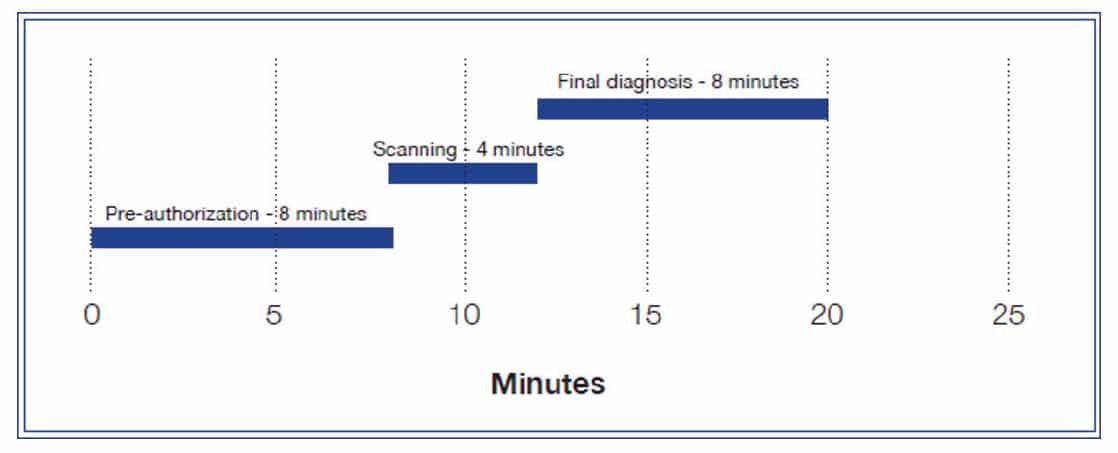
This figure represents time spent between prescription and scanning. Pre-authorization took on average 8 minutes, scanning 4 minutes and final diagnosis 8 minutes. Therefore, a total of 20 minutes were necessary from prescription to scanning.
Over 50% Of The Time, Point-of-care CT Leads To Change In Diagnosis
The national study performed by Dr. R.B. Kuppersmith found that “75% of an initial temporary diagnosis was modified once CT was read. Note that this high number demonstrates that the prescription was appropriate and necessary. It also suggests that initial clinical diagnosis is not sufficient to the final accurate diagnosis. More importantly, it demonstrates that, in the absence of immediate scanning, the final diagnosis is postponed until data is available.”
These results were supported by written comments collected from doctors. A few examples are: “patient medications changed because significant infection not present”; “avoid further antibiotics”; “scan clear, therefore symptoms due to allergies”; “change surgical procedure”; “sinus clear – shorten course of antibiotics – no topical steroids”; “yes, stopped antibiotics after noting improvement”.

This figure represents that in 57% of cases, medication was prescribed or modified as a result of CT scanning. Interestingly, it meant that 18% of all patients were not prescribed a medication they would have otherwise been given in the absence of a CT scan.
Over 50% Of The Time, Point-of-care CT Leads To Change In Diagnosis
Point-of-Care CT leads to increased business
One U.S. case study for an ENT office where at least one surgeon is practicing showed that the number of sinus cases completed year over year (both in the OR and the office; accounting for traditional FESS and balloons) increases by 50. This increase in number of cases created an overall increase in revenue:
Off-site = 62% increase
Office Location = 35% increase
Integrate On-site Treatment Services In Your Practice
A practice administrator’s day is full of putting out fires, handling HR issues, and juggling the needs of each physician. We’ve got your back!
Here is a simple check list to determine if MiniCAT is something worth bring up at your next Physicians Planning Meeting:
Physician Age: Will any of your physicians be in practice for at least the next five years?
Yes ____ No ____
In-office Procedures: Does at least one physician perform in-office balloon Sinuplasty, or plan to do so in the next six months?
Yes ____ No ____
Ancillary Services: Has the practice already implemented audiology and/or allergy, or plans to do so in the next six months?
Yes ____ No ____
Business Growth: Are your physicians interested in continually growing their practice, but are unsure where to start?
Yes ____ No ____
If you answered YES to any of these questions, it’s time to introduce MiniCAT into your next strategic meeting!
A “QUALITY SOLUTION” IS A SOLUTION THAT STARTS WITH CT.
MiniCAT™ Point-of-Care CT Provides Contact-less Diagnostics for ENTs
The MiniCAT was designed, and is constantly improved, with ENT and Allergy clinicians and staff in mind.
Now, more than ever, point-of-care CT can be placed in the ENT practice to assist with contact-less, same-day diagnostics.
As the pioneer and market leader in point-of-care CT, Xoran is always looking for ways to assist ENT practices in streamlining their workflow while providing low dose diagnostic scanning.
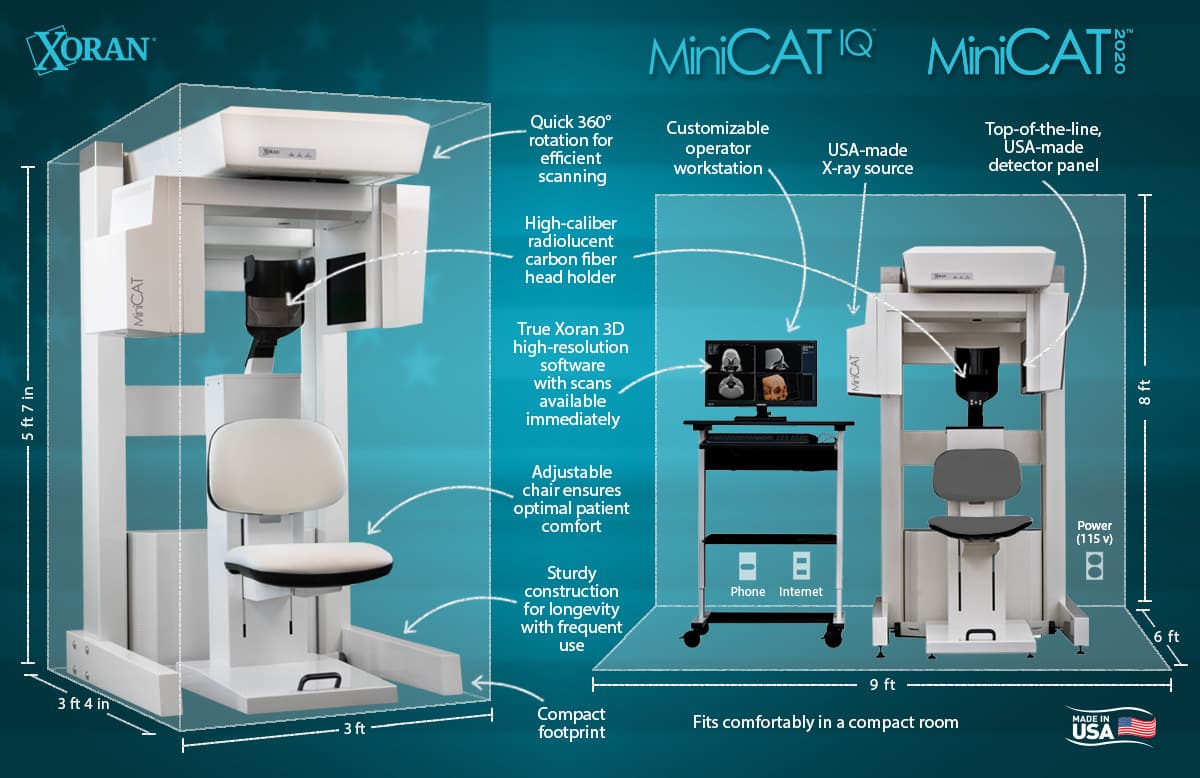
Trust The Proven Market Leader In Point-of-care CT
Socially distanced CT imaging provides surgeons with the information needed to pre-authorize procedures … and patients are saved a trip to a potentially overtaxed and “virus-exposed” hospital radiology department.
In the global “new normal,” providers will still need access to CT data. MiniCAT is uniquely situated to assist surgeons in getting quick, reliable CT results. With XoranConnect, MiniCAT scan images can be remotely reviewed with patients.
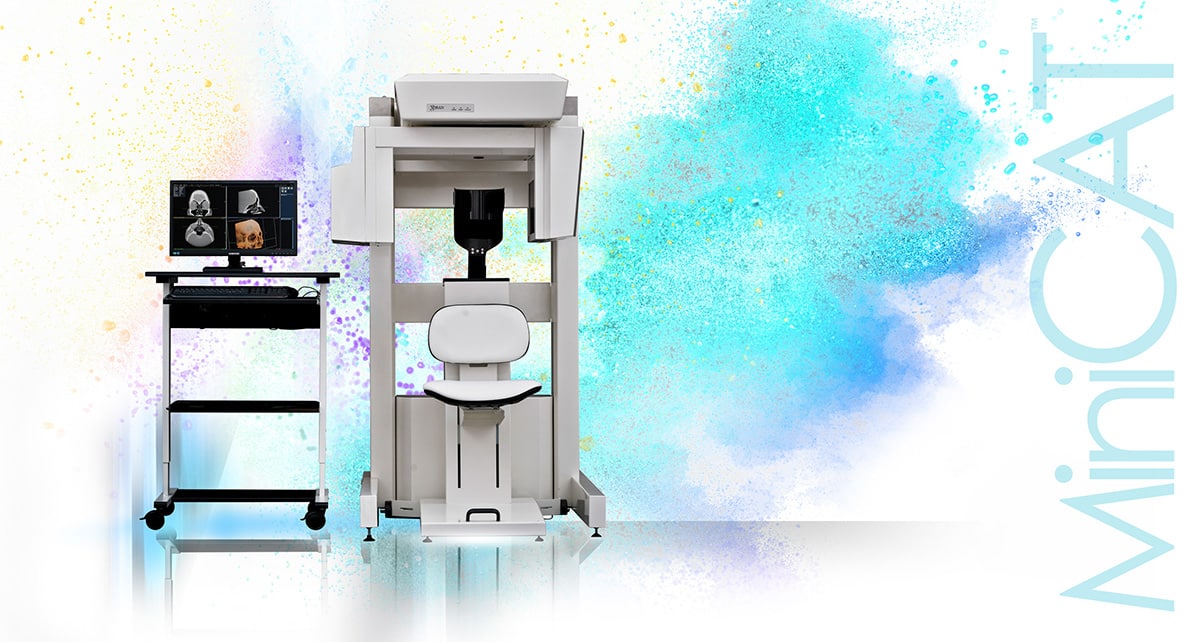
Contact Xoran Today To Discover Our Low-risk Purchase Options On MiniCAT—Designed For Ent And Allergy Practices’ Back-to-clinic Efforts.
A Look At Patient Care Workflow Without Point-of-care CT And Telemedicine
Offering CT at the ENT practice is a built-in “minimal-contact” diagnostic tool, and it keeps the patient from having to get scanned at a hospital.
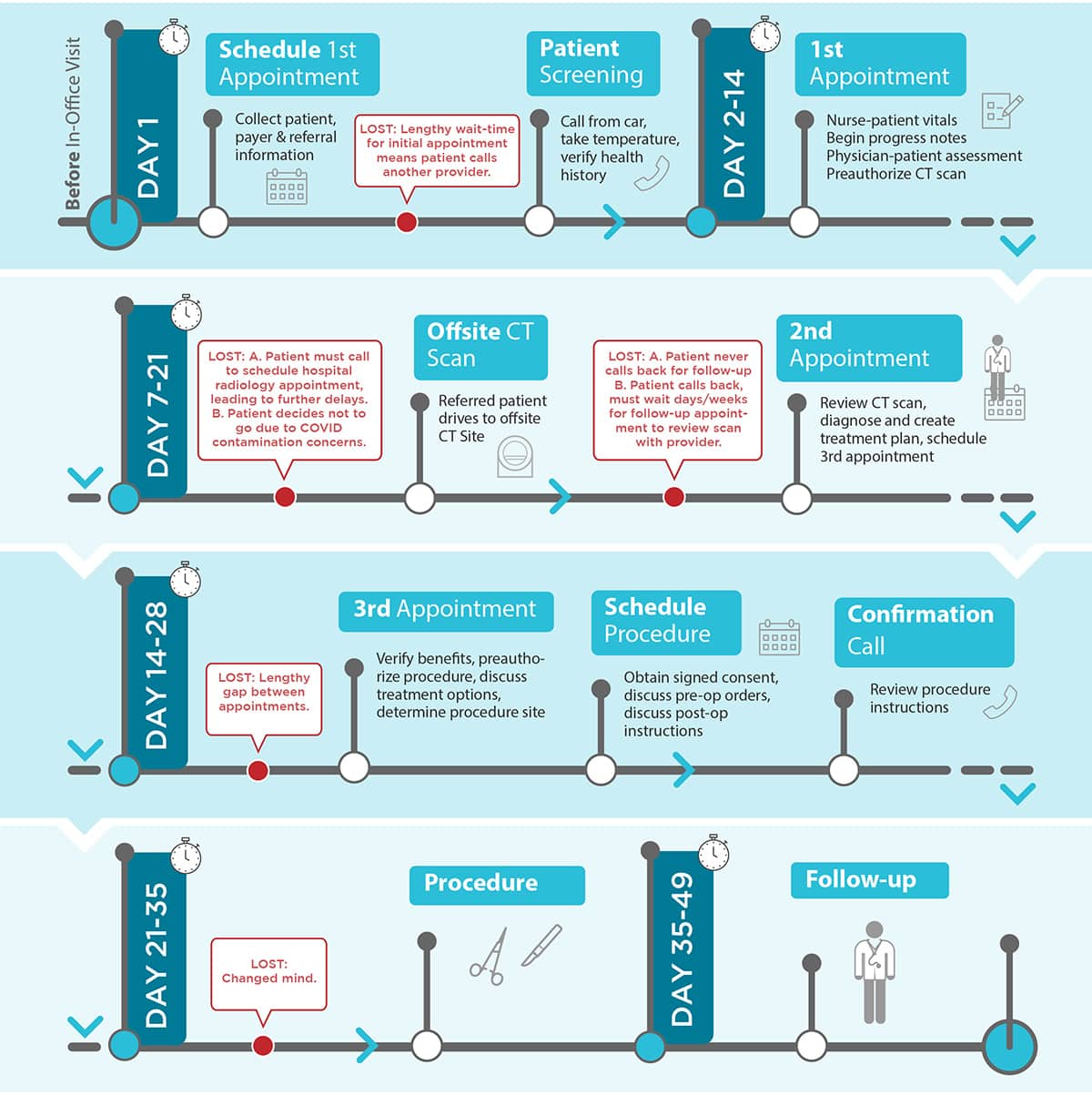
A Look At Patient Care Workflow With Point-of-care CT And Telemedicine
Implementing Point-of-care CT at the ENT practice is a built-in “minimal-contact” diagnostic tool and can save patients 1-2 office visits and weeks of waiting.
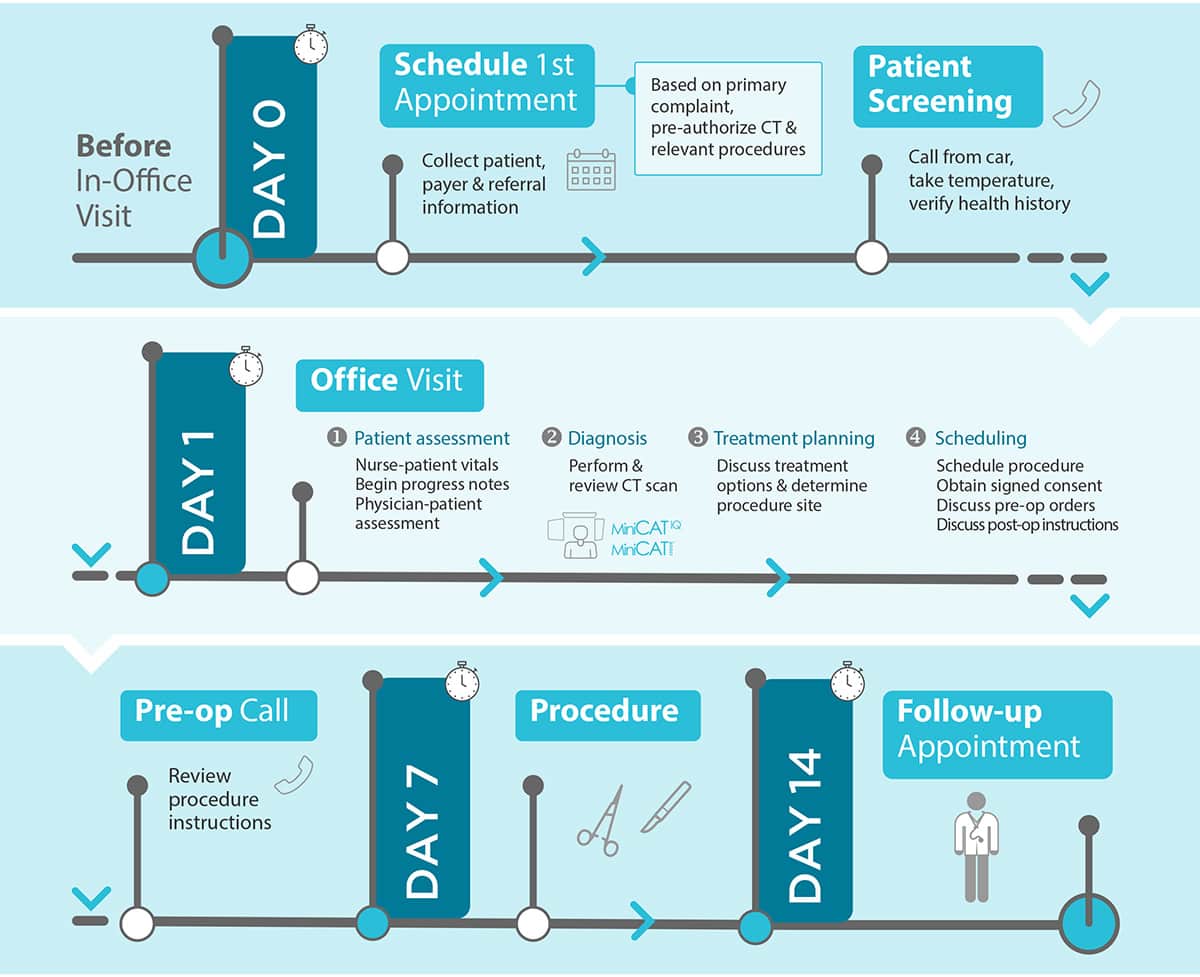
Improving your practice workflow with MiniCAT …
… reduces the backlog for seeing new patients, because patients are seen and treated more quickly
… gets surgeons back to doing what they were meant to do, because they have more time for in-office procedures
… increases practice revenue, because procedures are reimbursed higher than follow-up visits
… speeds billing and payment cycles, because time-to-procedure no longer takes months
References
Bhattacharyya N1. Functional limitations and workdays lost associated with chronic rhinosinusitis and allergic rhinitis. Journal of Rhinologic Allergy. 2012 Mar-Apr; 26(2):120-2.
Conley D, Pearlman A, Xhou K, Chandra R, Kern R. The role of point-of-care CT in the management of chronic rhinosinusitis: A case-control study. Ear, Nose & Throat Journal 2011;90:8:377391.
Leung, R. M., Chandra, R. K., Kern, R. C., Conley, D. B. and Tan, B. K. (2014), Primary care and upfront computed tomography scanning in the diagnosis of chronic rhinosinusitis: A cost-based decision analysis. The Laryngoscope, 124: 12–18. doi:10.1002/lary.24100
Leung, R., Kern, R., Jordan, N., Almassian, S., Conley, D., Tan, B. K. and Chandra, R. (2011). Upfront computed tomography scanning is more cost-beneficial than empiric medical therapy in the initial management of chronic rhinosinusitis. International Forum of Allergy & Rhinology, 1: 471–480.
Tan BK, et al. A randomized trial examining the effect of pretreatment point-of-care computed tomography imaging on the management of patients with chronic rhinosinusitis symptoms. The Laryngoscope 2011; 1: 229- 234.
U.S. NRC 20.1003 Definitions. https://www.nrc.gov/reading-rm/doc-collections/cfr/part020/part020-1003.html




